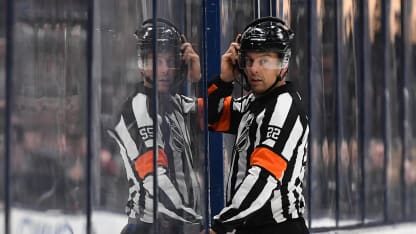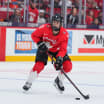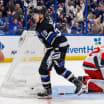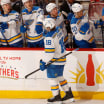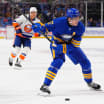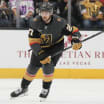The GMs will put a recommendation to the NHL/NHLPA Competition Committee to allow for the more liberal interpretation of the rule, hoping the change will lead to fewer coach's challenges for offside and more goals allowed to stay on the board.
If approved by the Competition Committee, the change then must be approved by the NHL Board of Governors before it could become official as soon as next season.
"There have been so many good goals that people scored that have been taken away for nothing that meant anything to the play," Carolina Hurricanes general manager Don Waddell said. "That's the frustrating part sometimes. We want goals, we score very good goals, and it just so happened that the guy was crossing over at the wrong time."
The NHL reported that 18 coach's challenges through 1,015 games played this season have been for skate in the air plays, and of those 14 led to goals being removed. There were 26 skate in the air challenges through 1,015 games last season leading to 16 goals removed.
"When we met with our breakout group [Monday], the group thought that it was tough watching a game, especially with our skilled players, when we see a nice goal being scored and there's a delay and there's a challenge, and we're taking down good hockey goals because the guy's toe is slightly off the ice or he's in a crossing over motion where the majority of his body is still in the neutral zone but his skate is not touching the ice," NHL senior vice president of hockey operations Kris King said. "They felt a lot of times the guy that is offside isn't even involved in the rush. They just felt the skate in the air really didn't have a lot of bearing on any of these goals."
King said this interpretation of the offside rule shouldn't require a change in the wording of the rule (83.1), which states, "A player is onside when either of his skates are in contact with, or on his own side of the line, at the instant the puck completely crosses the leading edge of the blue line."
"It's not a change in the rule, it's a change in the application of the rule to not be required to have contact with the ice but for the skate to be over the blue line when the puck crosses the line," King said.
This is a change in opinion for the general managers, who have been debating the merits of this change in the offside rule for four years.
They previously did not want to make the change because they worried about skates being up in the air and leading to player safety concerns, and they thought it would make it tougher for linesmen to determine if the skate was onside regardless if it was touching the ice or in the air.
However, King said the linesmen he has spoken with said it would be easier for them to determine if the skate is above the blue line rather than determining if a piece of the blade was still in contact with the ice before it completely crossed the leading edge of the blue line.
"This was one avenue where we thought we might be able to have high-skill plays that have led to goals but were then overturned because of an offside by inches really," Tampa Bay Lightning general manager Julien BriseBois said. "That was never the intent of the rule. Now we have the possibility of having those goals count."
